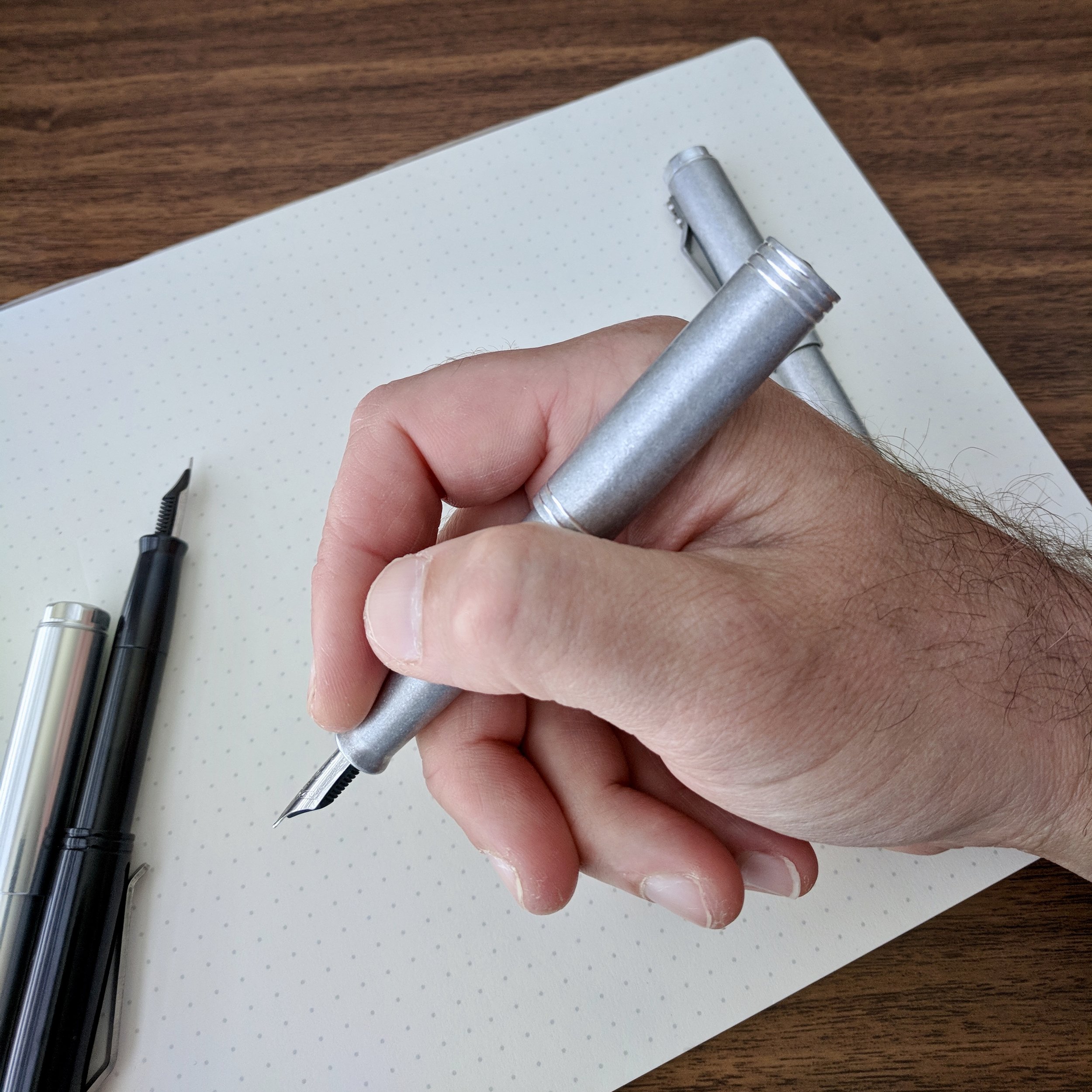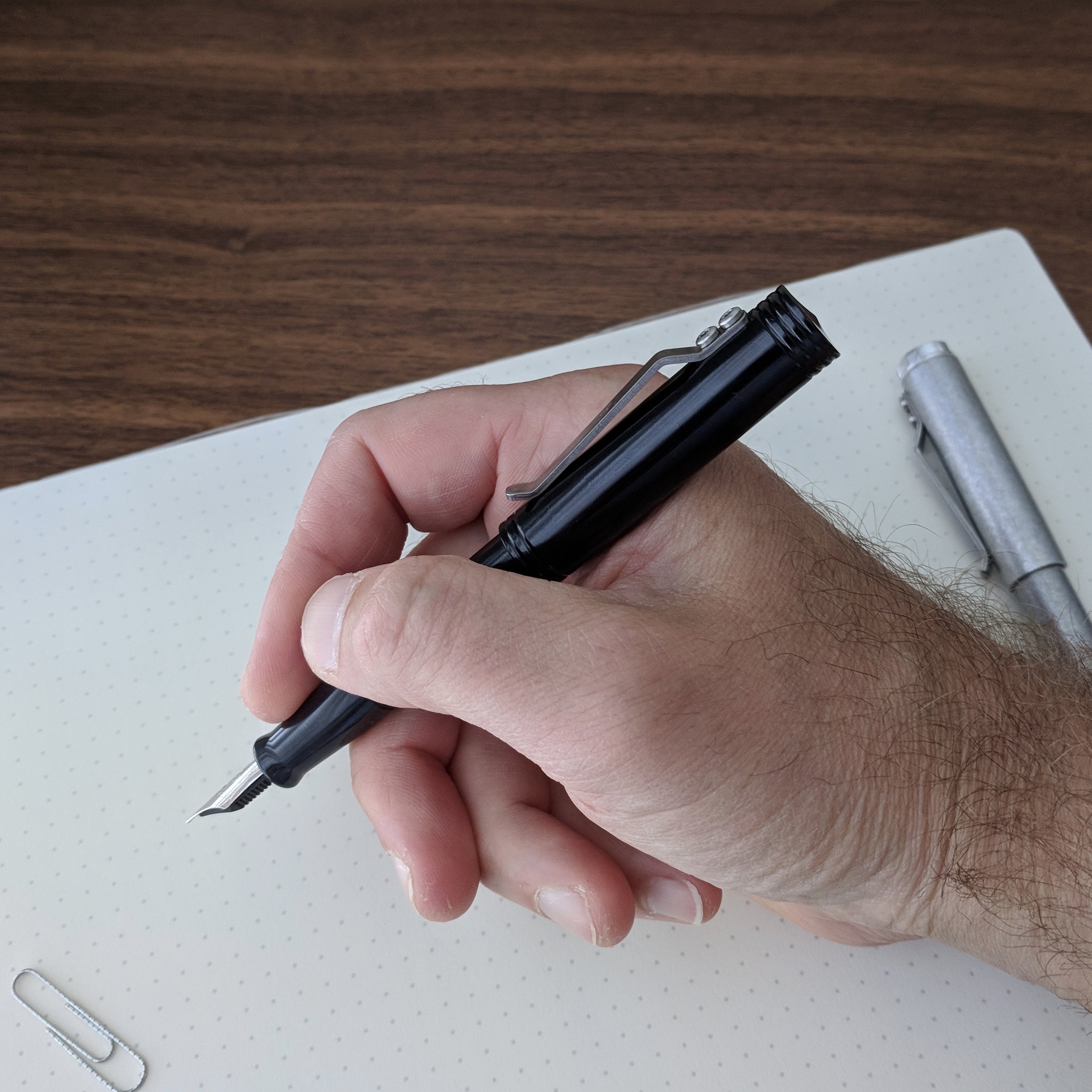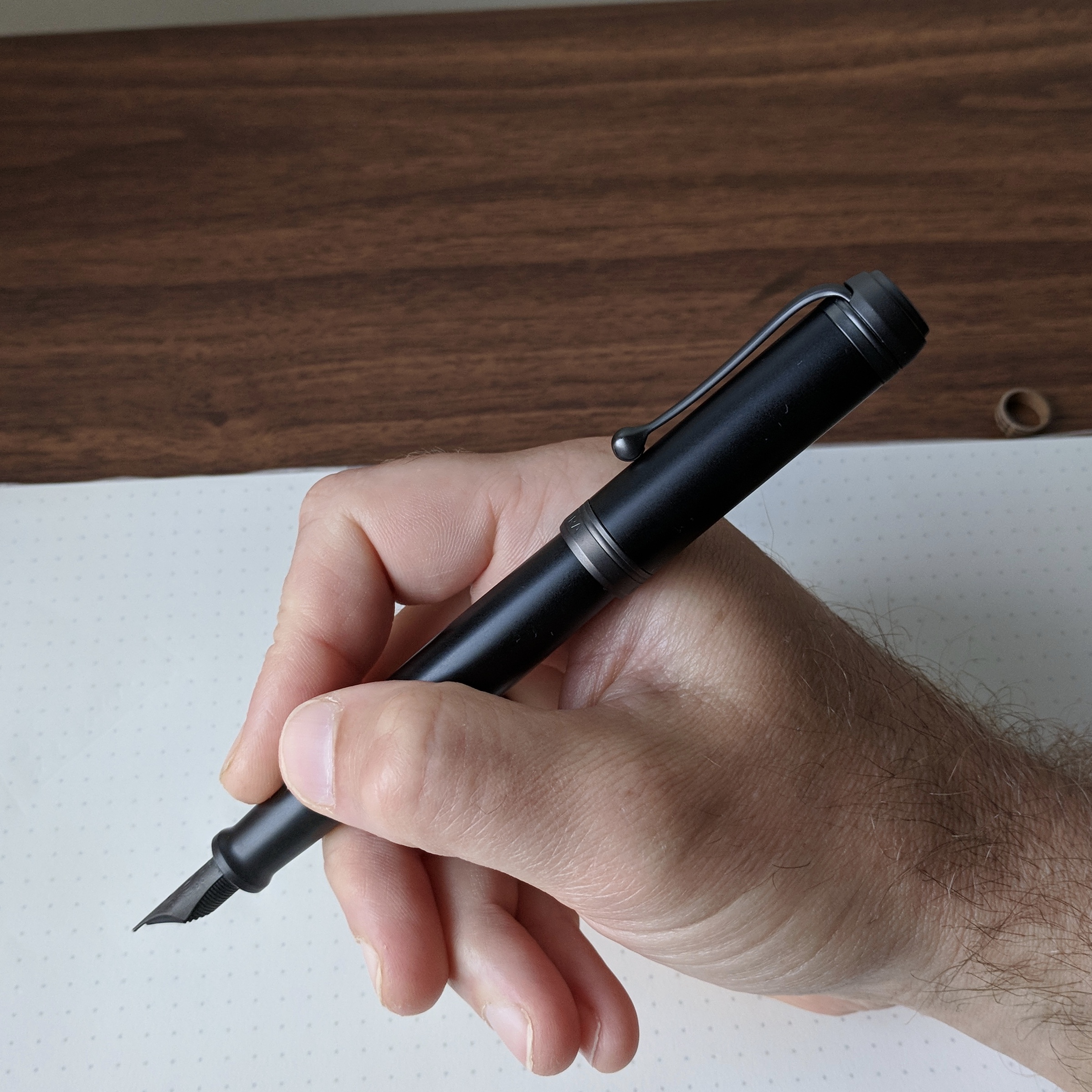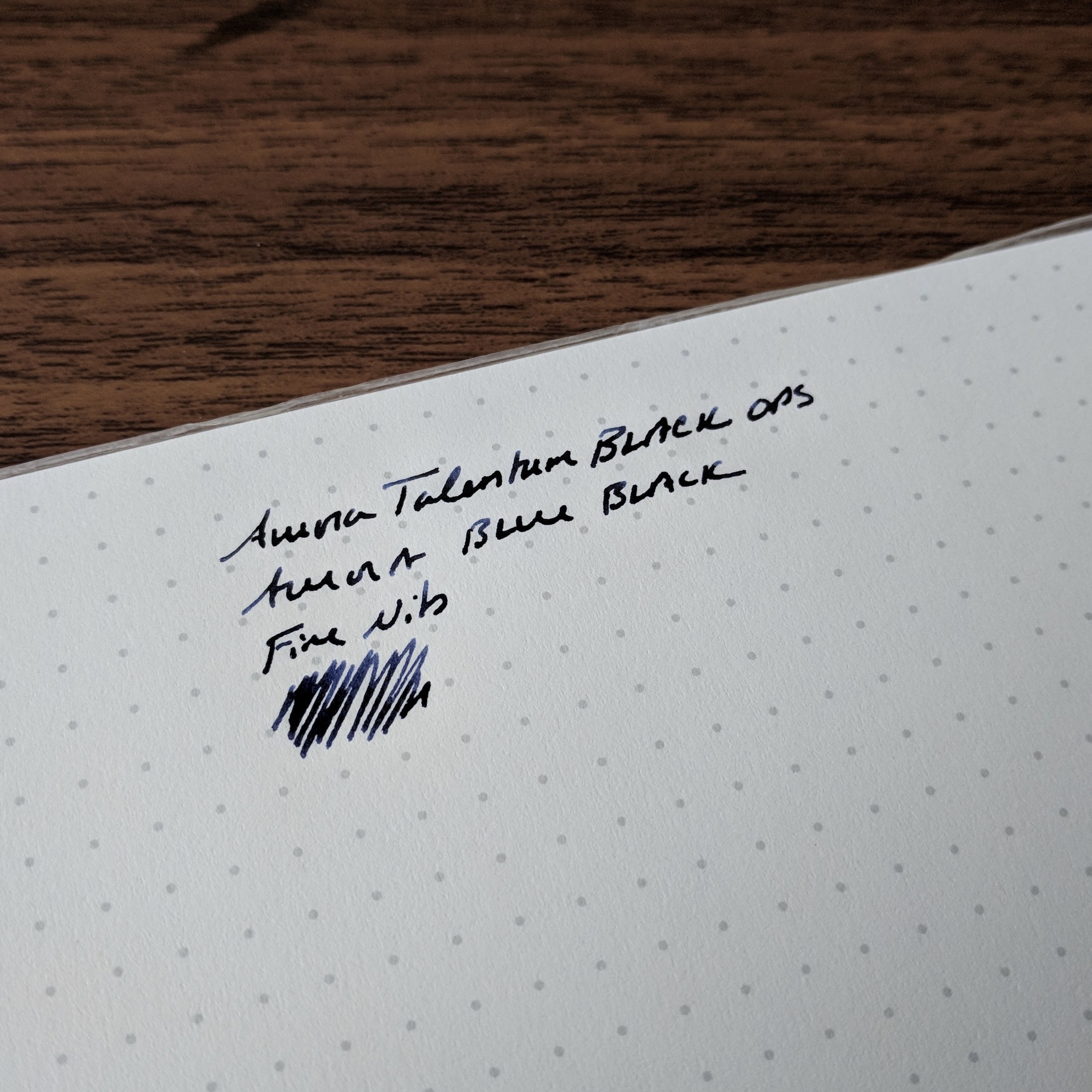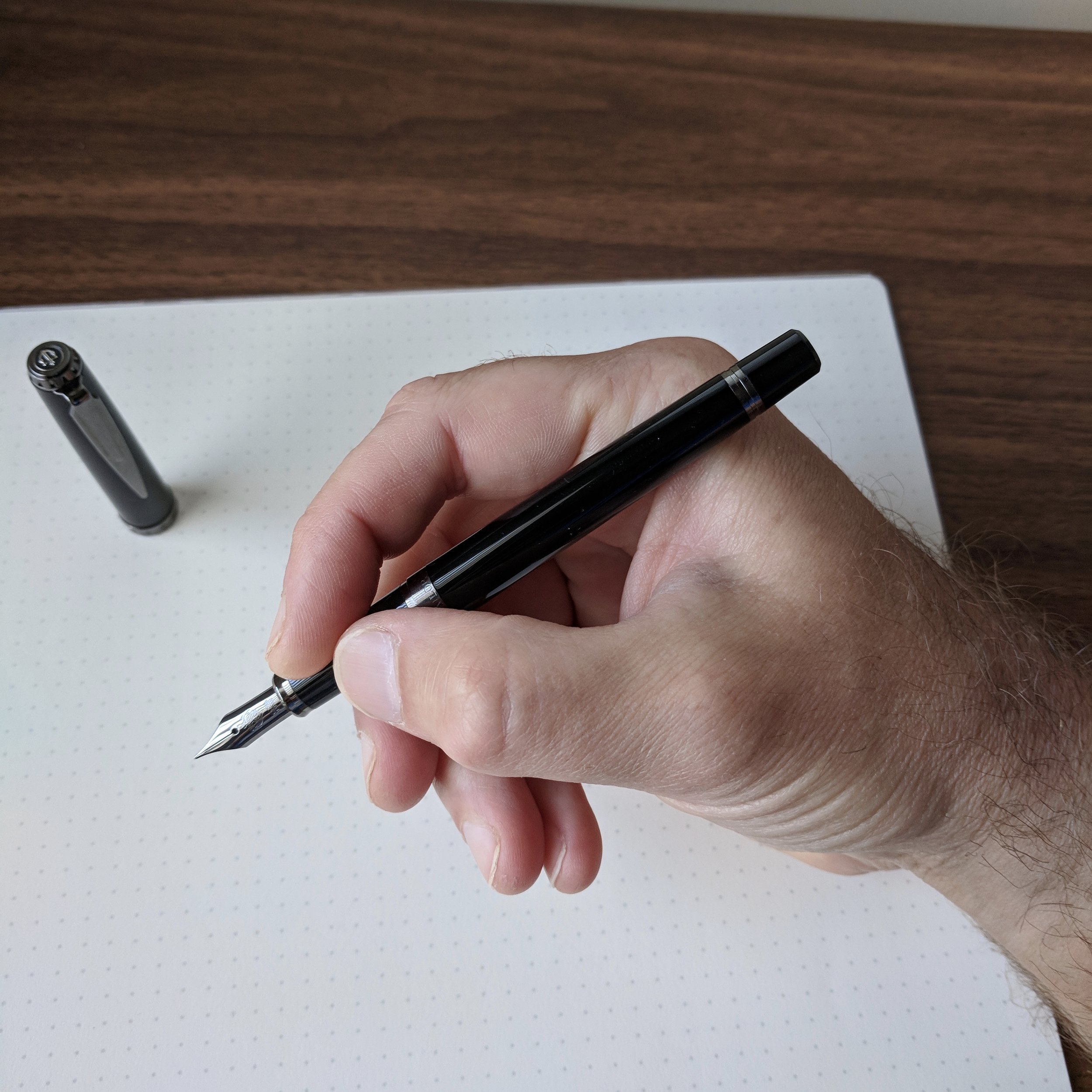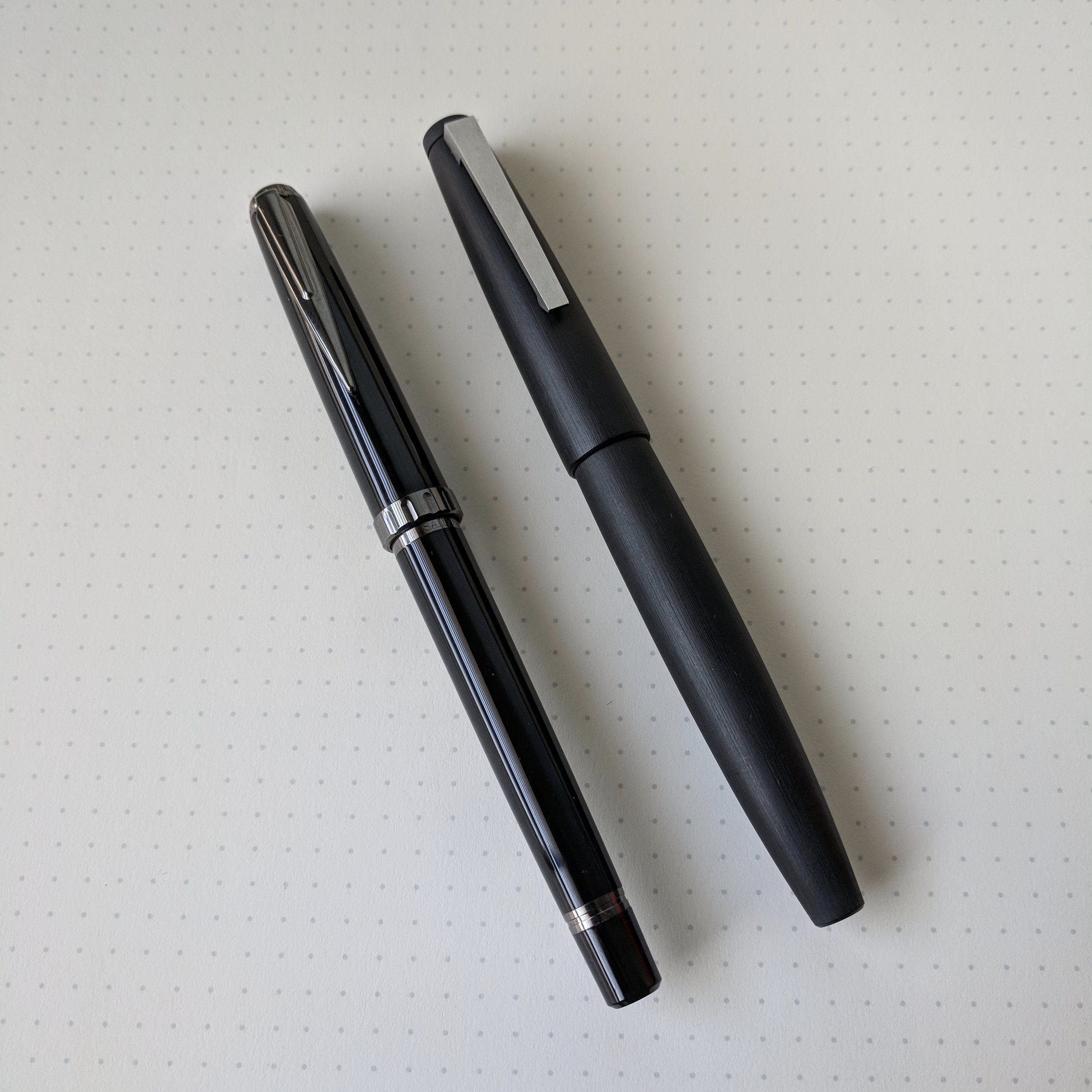Confession: I had stopped backing pens on Kickstarter a while ago, and honestly had lost interest in the platform, because I felt that a lot of the Kickstarter pens out there weren't doing enough to innovate and distinguish themselves from one another. So, I unfortunately missed the launch of the KOSMOS ink, the newest offering from German design house Stilform. When they reached out and asked whether I'd be willing to review their pen, I was pleased to see something truly different, in terms of both design and functionality. The original KOSMOS pen won a Red Dot design award back in 2016, and Stilform recently learned that the KOSMOS ink has won the 2018 Red Dot award!
Most of the attention this pen has received focuses on the KOSMOS ink's magnetic cap, and for good reason. The cap not only closes securely, but it realigns itself so that the facets on the cap line up with the facets on the body. To uncap the pen, all you need to do is twist the cap slightly and it pops off - magnetic force once again!
The manufacturing quality on this pen appears excellent. The facets line up, and the magnetic cap is shockingly accurate in terms of how well it orients the cap/body facets without having to be adjusted.
But my favorite aspect of this pen isn't the magnetic cap - it's the double-faceted body. I enjoy the streamlined design of clipless pens, but the "roll off the table factor" prevents them from being something I use regularly at work. The KOSMOS fixes this issue by adding facets on two sides. (Note, KOSMOS also offers the opportunity to add a clip to your pen, which also looks cool though I haven't seen it in person.)
I'll also add that the anodization on this pen is high quality. There are no visible flaws on my prototype and the texture feels great in the hand.
Since the cap and the body are the same diameter with no taper, the KOSMOS isn't going to post. I didn't find that to be an issue, since this pen has near-perfect balance. The section provides a lot of gripping area, without any cap threads to dig into your fingers. It's a very comfortable writing experience.
KOSMOS ink uses Bock nibs, which is a perfectly appropriate choice. I had no issues with the fine nib that shipped with my pen. The filling system is cartridge/converter, and the prototype I received included a Pelikan "long" cartridge.
Takeaways and Where to Buy (Updated)
The KOSMOS ink has now closed on Kickstarter, and with the project raising more than €260,000 with more than 2600 backers. That's an incredible performance for a fountain pen Kickstarter, and after having the opportunity to test this pen out for myself, I think the backers are going to be happy. The pricing seems fair as well, with aluminum pens starting at around $69 USD, and a titanium version also available for about $127 USD. While the Kickstarter project has closed, Stilform has opened up an Indiegogo page, and if this pen interests you, you can still back the project here. There are also several potential add-ons, including pen cases, stands, a converter, and a clip (as mentioned above).
Disclaimer: Many thanks to the team at Stilform for providing me with a review unit, free of charge.
Also note that this is a "First Impressions" post, of a pen that I tested over the course of a couple days in advance of the Kickstarter ending. Should my conclusions change after long-term use, I will of course update this review.




